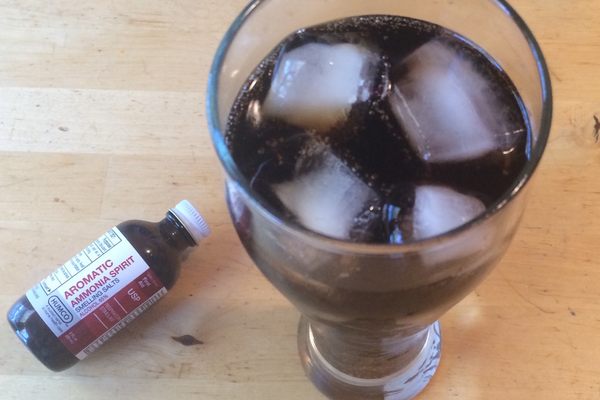Celery is not a particularly celebrated food, but back when Dr. Brown introduced a celery soda called Cel-Ray, he was right on trend.
According to what has become something of a legend, the soda company behind Cel-Ray was founded in 1869 by one Dr. Brown, who made tonics intended to quell bowel and stomach discomfort. The elusive physician started making a tonic concocted from sugar, carbonated water, and crushed celery seeds specifically to nourish Jewish immigrant children in New York’s Lower East Side and Williamsburg. Once he started ladling it out by the spoonful at local pharmacies, though, it became a local favorite.
Dr. Brown then persuaded a friend, who worked at the Scholz Bottling Company, to start distributing the celery tonic that would become Cel-Ray. At the time, it wasn’t unusual for soda to be marketed as a medicinal: Moxie soda, for instance, was dubbed a “nerve tonic.” Dr. Brown’s creation was renamed Cel-Ray in the early 1900s, though, since the U.S. Food and Drug Administration wasn’t keen on sodas being called “tonics.”
The success of Cel-Ray, which has a pungent, aromatic celery taste, would have been less surprising back then, as savory drinks made of ingredients such as beets were common and popular in Europe. Celery was also a food fad du jour in the 19th and early 20th century. Victorian England was especially cuckoo for celery—people used celery as a star ingredient, and upper-class homes prominently displayed celery in special vases. People believed celery was a miracle that could cure insomnia, malaria, and headaches; industrious folks developed celery-flavored gums and tonics.
It’s unclear whether there ever was a Dr. Brown at all. He may have just been a marketing invention. If he was, it worked. Cel-Ray achieved particular prominence among Jewish communities in New York. By the time the celery craze died down in the 1930s, Cel-Ray had become an institution, a staple of bar mitzvahs and weddings colloquially known as “Jewish Champagne.” Cel-Ray remains a popular accompaniment to Jewish deli fare, and nearly 150 years after it was invented, Cel-Ray is indeed still made from celery seeds, and not actual celery.
Written By
 paulamejia
paulamejia
Sources
- www.nytimes.com/2011/10/16/nyregion/answers-to-questions-about-new-york.html?mcubz=0
- www.nytimes.com/1984/02/22/business/dr-brown-in-market-expansion.html?scp=1&sq=%22Dr.%20Brown%22%20and%20%22Market%20Expansion%22&st=cse
- www.seriouseats.com/2014/10/dr-browns-cel-ray-celery-soda-history.html
- boston.forward.com/articles/185243/l-chaim-to-dr-brown-most-enduring-kosher-soft-dr/
- www.eurousa.com/wp-content/uploads/2013/06/Dr-Browns-Soda-Sell-Sheet-1.pdf

















